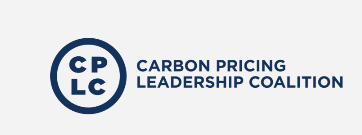 The Future of ESG Reporting in 2025 and Beyond
The Future of ESG Reporting in 2025 and Beyond
Emerging Trends, Key Challenges, and Strategic Outlook for Sustainable Practices and Disclosures
Sustainability reporting has become a fundamental component of corporate strategy, risk management, and stakeholder engagement. As regulatory bodies in Canada and worldwide tighten disclosure requirements and stakeholders demand greater transparency, companies must stay ahead of the evolving Environmental, Social, and Governance (ESG) reporting landscape. This blog explores some of the latest ESG reporting trends, regulatory developments, and the challenges businesses face in meeting these new expectations.
Global ESG Reporting Trends
The ESG reporting landscape is experiencing significant transformation, driven by regulatory shifts, stakeholder pressure, and the need for consistent global standards. Key trends include:
The Push for Global ESG Harmonization
In 2025, sustainability reporting is set to become more harmonized across jurisdictions, as key regulatory and standard-setting bodies work toward establishing consistent and comparable sustainability disclosure standards. Notable initiatives include:
- CSSB: The Canadian Sustainability Disclosure Standards (CSDS 1 & CSDS 2), aligned with ISSB standards, took effect for annual reporting periods beginning on or after January 1, 2025. The adoption of each standard remains voluntary for now, with Canada’s provincial and territorial regulators and legislators determining potential mandates, compliance scope, and implementation timelines.
- GRI & ISSB Collaboration: The Global Reporting Initiative (GRI) and International Sustainability Standards Board (ISSB) are enhancing interoperability efforts to align disclosures, ensuring they meet investor, and stakeholder demands while maintaining distinct reporting scopes.
- EU’s Corporate Sustainability Reporting Directive (CSRD): Beginning its first reporting cycle in 2025, the CSRD introduces the double materiality principle, requiring companies to disclose both financial materiality, and their societal and environmental impact.
- Securities Exchange Commission Climate Disclosure Rules in the U.S.: Political resistance and legal challenges may delay the adoption of SEC-mandated climate disclosure rules, but investor pressure continues to drive voluntary reporting.
Read our blogs: Prepare for Canada’s New Sustainability Reporting Requirements and The Critical Role of ISSB Reporting Standards for Your Organization.
Strengthening ESG Accountability & the Crackdown on Greenwashing
As stakeholders demand greater transparency, regulatory bodies are intensifying efforts to combat greenwashing and ensure credible ESG commitments:
- Canada’s Bill C-59: This legislation requires businesses to substantiate environmental claims with robust, verifiable evidence. The burden of proof now falls on companies, which now must scrutinize sustainability communications, and enhance verification and support of their commitments and disclosures, including ESG reports.
- Net-Zero Strategy Compliance: Companies must outline clear transition plans for achieving net-zero targets. The CSRD mandates granular details on decarbonization pathways, emphasizing transparency.
- Investor Expectations for Scope 3 Disclosures: Given the complexity of Scope 3 emissions, businesses are increasingly focusing on supplier engagement and value chain collaboration to ensure credible reduction strategies.
- Heightened Litigation Risks: Legal challenges related to greenwashing and ESG misrepresentation are on the rise, compelling companies to implement rigorous verification processes.
Biodiversity & Natural Capital in ESG Reporting
Beyond climate disclosures, biodiversity and nature-based solutions are emerging as key ESG priorities:
- TNFD Reporting Adoption: Companies are increasingly using the Taskforce on Nature-related Financial Disclosures (TNFD) framework to assess and report biodiversity risks and dependencies.
- Corporate Strategies for Natural Capital: Businesses are integrating biodiversity initiatives into sustainability plans, including land restoration, nature-based solutions, and supply chain impact assessments.
What’s Next for ESG Reporting?
As ESG reporting continues to evolve, businesses must proactively adapt by:
- Staying updated on global and local regulations to ensure compliance.
- Defining clear implementation plans and allocating sufficient resources for ESG reporting.
- Ensuring robust ESG data management systems to streamline disclosures.
- Strengthening communication strategies to enhance credibility and mitigate greenwashing risks.
Learn More
To see how we are navigating these changes and leading in ESG transparency, explore Blackstone’s latest ESG Report.
Blackstone Energy Can Help You
For over 20 years, Blackstone Energy has helped numerous companies and organizations manage, conserve, and report on their carbon emissions to ensure they comply with current regulations.
Our experts are ready to guide you through environmental reporting compliance, climate strategy development, and carbon accounting to achieve your sustainability goals. Contact us to learn more.
Frequently Asked Questions
Are CSDS 1 and CSDS 2 aligned with ISSB Standards?
Yes, CSDS 1 and CSDS 2 align with the International Sustainability Standards Board (ISSB) baseline standards, including IFRS S1 (General Requirements for Disclosure of Sustainability-related Financial Information) and IFRS S2 (Climate-related Disclosures). However, these standards have been adapted for the Canadian market, featuring a later implementation date and additional transition reliefs.
What is the purpose of CSDS 1?
CSDS 1 serves as the foundational reporting standard under CSSB frameworks, defining the scope, objectives, and reporting principles.
What is the focus of CSDS 2?
CSDS 2 focuses on climate-related disclosures, requiring businesses to report on physical and transition risks, greenhouse gas (GHG) emissions, and climate adaptation strategies. It also incorporates scenario analysis and transition planning, helping companies evaluate their long-term climate risks and mitigation strategies.
When do CSDS 1 and CSDS 2 take effect?
The CSSB standards are in effect for annual reporting periods beginning on or after January 1, 2025.
Will compliance with CSSB Standards become mandatory?
Currently, CSDS 1 and CSDS 2 are voluntary. However, provincial and territorial regulators may decide to mandate compliance, specifying which businesses must apply the standards and within what timeframe.
Are there guidelines to help companies avoid greenwashing?
Yes. On December 23, 2024, the Competition Bureau of Canada released draft guidelines clarifying expectations under the anti-greenwashing provisions introduced by Bill C-59.
What is the Corporate Sustainability Reporting Directive (CSRD)?
The Corporate Sustainability Reporting Directive (CSRD) is an EU regulation that establishes mandatory ESG reporting requirements for companies operating within the EU. It introduces the double materiality principle, requiring businesses to report both how sustainability factors impact financial performance and how their operations effect society and the environment.
What is the Taskforce on Nature-related Financial Disclosures (TNFD)?
The Taskforce on Nature-related Financial Disclosures (TNFD) is a global initiative designed to help organizations assess and report on nature-related risks and opportunities. Like the Task Force on Climate-related Financial Disclosures (TCFD), TNFD provides a framework for companies to integrate biodiversity and ecosystem-related risks into financial and sustainability reporting.








